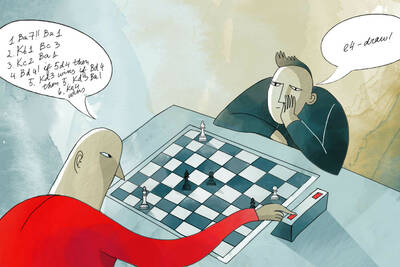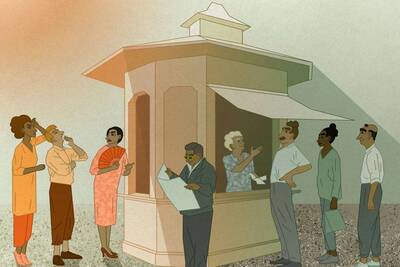Strong intellectual property rights (IPRs) are generally considered necessary to encourage innovation and protect the price of authentic products. However, research by Yi Qian (Assistant Professor of Marketing at the Kellogg School of Management) shows that under some circumstances the quality and prices of authentic goods can actually increase with the market entry of counterfeit products.
Qian has found that strong IPRs alone are not enough to ensure innovation. In an award-winning study published in the Quarterly Journal of Economics, she investigated whether IPR enforcement is absolutely necessary to ensure innovation. She found that brands with less government protection differentiate their products through innovation, self-enforcement, vertical integration of downstream retailers, and subtle high-price signals. These strategies push up the prices of authentic products and are effective in reducing sales of counterfeit goods.
A unique historical development allowed Qian to design a study that could separate the causal effect of counterfeit products from other market forces. In the early 1990s the Chinese government had to respond to several food safety situations and gas explosion accidents. In order to deal with these situations, the government had to shift resources from monitoring IPRs in other sectors, including footwear products. The lack of IPR enforcement resulted in counterfeiters entering the Chinese footwear market.
Qian collected data from annual financial statements and other records from thirty-one companies that produce brand-name products and their corresponding counterfeits for the years 1993 to 2004. Table 1 presents summary statistics before and after the policy change. Qian was surprised to find that authentic prices went up when counterfeits entered this market. Before counterfeit shoes entered the market, the adjusted price of a high-end authentic shoe was about $43. After the entry of the counterfeits, the price rose to more than $61.
Table 1: Selected sample statistics before and after the policy change
Note: This table presents the summary statistics of the data set, slicing it into two parts: data prior to the year 1995, when the Chinese government reallocated enforcement resources away from the footwear sector to fill in the needs of the safety sectors, and data after 1995. All company-level data were gathered through original interviews and surveys. Prices and costs are deflated using the Consumer Price Index published in the World Bank’s World Development Indicators, using 1995 as the base year.
Table 1 also illustrates a similar trend for increases in the prices of authentic medium-end and low-end shoes. Overall, Qian found that the prices set by authentic manufacturers who were infringed upon rose on average by 45 percent after their counterfeiters entered the market. This is mainly due to the significantly improved authentic shoe materials, which differentiated them from counterfeits. In contrast, the prices of generic brands without counterfeits followed only a slightly upward trend over time and prices for counterfeit products remained level.
In her paper Qian discusses in detail each strategy that companies used to successfully combat counterfeits: innovation, establishing downstream retail stores, price signaling, self-enforcement, and assisting the government in its enforcement efforts.
According to Qian, the motive for innovation in this context is to improve product quality so that consumers are less confused by the counterfeits. For example, some companies invested in product attributes that are difficult to imitate such as shoe-surface materials, technology, and elegant appearance. This resulted in better customer loyalty to the authentic brand. A brand protection officer told Qian, “Many customers who bought counterfeit shoes felt very uncomfortable due to the inferior shoe materials, and some [counterfeits] even fell apart in public which caused embarrassment. These customers undoubtedly would rather pay more to secure authentic purchases. In the end, we had higher mark-ups for our shoes and more resources to develop new models of higher quality, which certainly would charge further higher prices and bring in more profits. As the gap between our products and the counterfeits widens, customers like ours more.”
The reported increase in brand loyalty is also a factor in the success of vertically integrating downstream retail stores. Prior to the entry of the counterfeit products, none of these companies had established retail stores. Two years later, 684 company stores had been established. The same brand protection officer reported, “Once our licensed company stores were opened, we had an influx of customers come and purchase even at much higher prices than the old wholesale prices.”
Sometimes setting a high price for a product can signal quality and help consumers differentiate authentic products from counterfeits. However, the literature suggests that the benefits of price signaling are usually temporary and Qian’s study confirms this theory. After controlling for cost, counterfeit entry resulted in an average price increase of 8 percent two years after entry. However, this effect faded away in a four-year analysis.
Another strategy that companies used to combat counterfeiters was self-enforcement through establishment of their own trademark protection office. Prior to the shift of government enforcement, the industry average of personnel devoted to brand protection was less than one person per company. At the end of the study period, this had risen to an average of four people per company. In addition, the data showed that companies with a poor relationship with the government experienced more counterfeiting infringements. Qian says that this points to another effective strategy, especially in countries such as China: foster a good relationship with the government. She explained that because companies have expertise in distinguishing their own products from counterfeits and the government has the authority to combat counterfeits, collaborating to share enforcement costs can make enforcement more effective.
The paper describes some of the joint public-private efforts that have emerged in China. For instance, since 2006 the Chinese government has initiated several television programs highlighting new strategies to combat counterfeiters and educate citizens on how to detect various counterfeits. The Chinese education system has also introduced IPR knowledge into textbooks to help the younger generation recognize that counterfeiting is illegal and shameful.
Qian says that her data from the Chinese footwear industry can be generalized to other countries and industries. “I found that a lot of the multinational corporations in Europe do the same things,” she explains.
Thus, whereas Qian’s earlier work established that IPR protection is not a sufficient condition for innovation, this study suggests that IPR protection may not be a necessary condition for innovation. “This is an interesting example where loosened intellectual copyright protection actually leads to more innovation. That reinforces my earlier finding that there seems to be some optimal level of intellectual property protection, and that level may vary from sector to sector and country to country,” Qian says.
Ed. Note: This paper was selected as one of the fifty best articles published in 2008 in management and won an Emerald Management Review Citation of Excellence.
Qian, Yi (2008). “Impacts of Entry by Counterfeiters.” Quarterly Journal of Economics, November, 123(4): 1577-1609.


